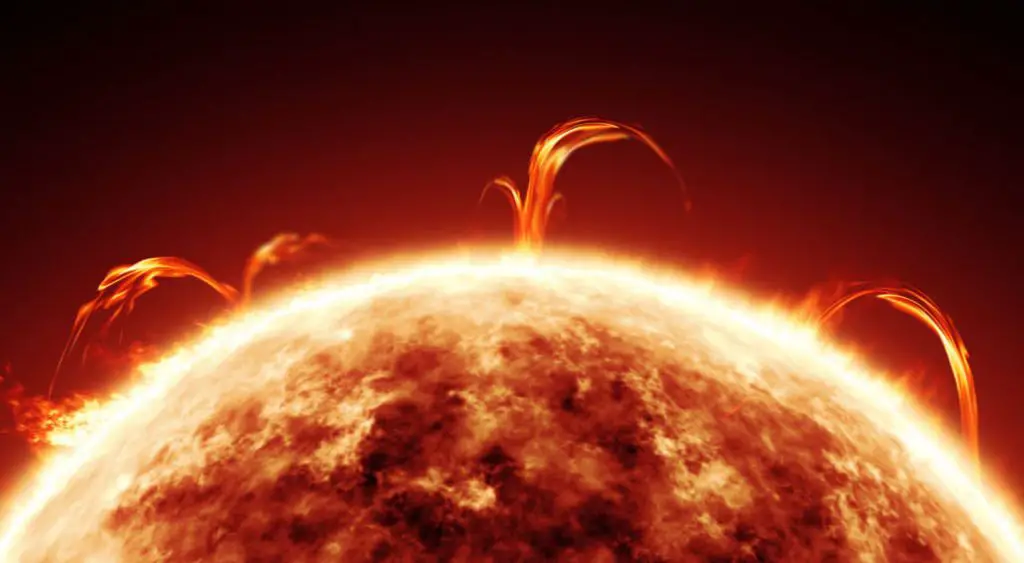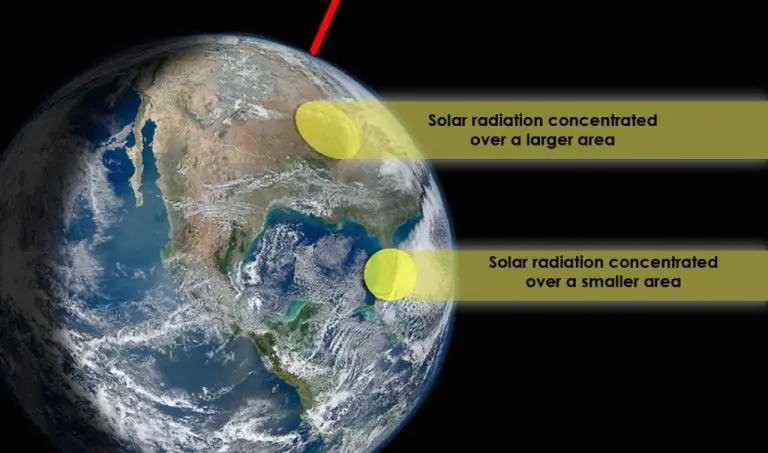What Causes The Sun To Produce Energy?
The Sun is the star at the center of our solar system and is responsible for producing energy that sustains life on Earth. This article will examine how the Sun is able to produce such vast amounts of energy through the process of nuclear fusion. We’ll start by looking at the role of gravity in initiating fusion, then discuss the proton-proton chain reaction that converts hydrogen into helium within the Sun’s core. Next, we’ll cover how the energy from fusion makes its way outwards and is transferred to the Earth. We’ll also compare the Sun to other stars and consider how long the Sun will continue producing energy through fusion before its lifespan comes to an end. Finally, we’ll reflect on some of the impacts the Sun’s energy output has on Earth.
Nuclear Fusion
The Sun produces energy through a process called nuclear fusion. At the core of the Sun, hydrogen nuclei are fused together under extremely high temperatures and pressures to create helium. This fusion process releases an enormous amount of energy in the form of gamma rays.
Specifically, in the Sun’s core, four protons (hydrogen nuclei) combine to form one helium-4 nucleus. Two of the protons become neutrons in the process, converting mass into energy per Einstein’s famous equation E=mc2. The Sun fuses approximately 600 million tons of hydrogen into helium every second. The output of this fusion is the source of the Sun’s heat and light energy.
Gravity
The Sun produces energy through nuclear fusion. But how does it get hot enough for fusion to take place? The answer lies in the Sun’s immense gravity. The Sun contains about 99% of all the matter in our solar system, so it has an extremely powerful gravitational pull. All this material exerts an inward force, compressing the gases at the core. This compression squeezes hydrogen atoms closer together, increasing temperature and pressure to the extreme levels needed for fusion. The Sun’s core reaches astounding conditions, around 27 million degrees Fahrenheit with 340 billion times the atmospheric pressure of Earth. Under these intense conditions, atoms move fast enough and nuclei get close enough for fusion reactions to ignite.
The Sun’s powerful gravity crushes the core and provides the essential pressure and heat to light the nuclear fire of fusion. Not only does gravity compress the gases, it also prevents the energy produced from escaping. While fusion attempts to expand the gases outward in an explosion, gravity pulls them back inward. This balance between gravity and fusion allows for stable energy production over billions of years. In this way, the immense gravitational force is what makes our Sun into a stable, long-lasting star. Gravity produces the conditions for fusion ignition and contains the resulting energy, allowing the Sun to shine consistently for around 10 billion years and counting.
Proton-Proton Chain
The proton-proton chain is the predominant fusion process that converts hydrogen to helium within stars like our Sun. It is a multi-step reaction that fuses four protons into one helium nucleus. The steps are:
- Two protons (hydrogen nuclei) fuse together to form a deuterium nucleus (hydrogen isotope) and a positron (antimatter electron) and neutrino.
- The deuterium nucleus fuses with another proton to form a light isotope of helium (helium-3) and gamma ray.
- Two helium-3 nuclei fuse together to form a stable helium-4 nucleus and two protons.
At each step, a small amount of mass is converted to energy according to Einstein’s equation E=mc2. This energy powers the Sun and is eventually radiated out into space in the form of photons.
The proton-proton chain takes place at the extremely high temperatures and pressures in the Sun’s core. It requires overcoming the electromagnetic repulsion between the positively charged protons. Quantum tunneling allows the protons to get close enough together for the strong nuclear force to take over and fuse them together.
Products of Fusion
The proton-proton chain reaction that powers the sun produces several byproducts in addition to energy. The main products are helium and neutrinos.
When two hydrogen nuclei (single protons) fuse together, the end result is one helium nucleus made up of two protons and two neutrons. So hydrogen fusing generates helium over the sun’s lifetime. The sun started out as mostly hydrogen and will continue fusing hydrogen into helium for billions of years.
The fusion process in the sun’s core also releases neutrinos. Neutrinos are very light, chargeless particles that rarely interact with matter. Trillions of neutrinos stream outward from the sun every second, most passing right through the solar mass and into space. This makes neutrinos very difficult to detect, requiring special observatories.
So in summary, the proton-proton chain reaction inside the sun produces energy, helium, and neutrinos. The energy powers the sun and allows it to shine. The helium builds up in the core over time. And the neutrinos stream outwards from the fusion, providing insight into what’s happening inside the sun’s core.
Transferring Energy
The energy produced by nuclear fusion in the core of the Sun does not immediately escape into space. Instead, it is transferred from the inner core in stages through the radiative and convective zones of the Sun.
In the inner core where fusion takes place, energy is released in the form of high energy gamma rays. These gamma rays bounce around, colliding with other atoms and gradually losing energy. Over time, the gamma rays are converted into lower energy photons in the infrared, visible light, and ultraviolet wavelengths.
This process occurs in the radiative zone, which extends outward from the core to about 70% of the Sun’s radius. The photons slowly radiate outward through this zone, constantly absorbing and re-emitting energy. It can take over 100,000 years for a photon generated in the core to reach the top of the radiative zone.
At the boundary between the radiative and convective zones, the temperature drops below 2 million K. Here, photons are reabsorbed into the solar plasma, heating it up. The hot plasma becomes less dense than the surrounding material and rises buoyantly, transporting energy through convection. Hot columns of gas carry energy up to the photosphere, the visible surface of the Sun.
The interplay between radiative diffusion and convection allows energy to be transported outward from the Sun’s core through its outer layers. This process takes an enormous length of time, but it is key for releasing the Sun’s energy into space in the form of heat and light.
The Sun’s Lifespan
The Sun has enough hydrogen fuel in its core to continue fusing hydrogen into helium and producing energy for approximately another 5 billion years. After this time, the Sun will enter the next stage of its lifespan.

The Sun is currently in what is known as the main sequence phase of its evolution, having converted hydrogen into helium through nuclear fusion in its core for around 4.5 billion years already. This represents the most stable and longest phase of the Sun’s evolution.
The reason the Sun can sustain fusion and emit energy for billions of years is due to its massive size. Its strong gravitational pull compresses the hydrogen gas in the core to extraordinary densities and temperatures, enabling sustained fusion reactions. Smaller stars consume their fuel much faster than larger stars like the Sun.
Based on models of stellar evolution, astronomers estimate the Sun is slightly over halfway through the main sequence phase. In approximately 5 billion years, the hydrogen fuel in the core will be exhausted and the Sun will begin fusing helium into heavier elements like carbon, entering the red giant phase.
Comparing Other Stars
The Sun lies in the middle range for stars, being smaller and cooler than extremely bright stars, yet also larger and hotter than the smallest types of stars. Smaller stars than the Sun, like red dwarfs, often rely on the proton-proton chain reaction just like the Sun. However, larger stars have sufficient mass and gravity to achieve the high densities and temperatures needed for more advanced nuclear fusion processes like the carbon-nitrogen-oxygen (CNO) cycle. Massive stars like blue giants can even fuse elements up to iron before going supernova.
Whereas the Sun will fuse hydrogen into helium for billions of years on the main sequence, massive stars burn through their fuel in only millions of years due to their exponentially higher energy output. Small stars like red dwarfs on the other hand can slowly fuse hydrogen for trillions of years, thanks to their lower temperatures and reduced fuel consumption. The Sun strikes a balance with a lifespan and output in the middle of the range for stars. Understanding how the Sun compares to other stars provides insight into stellar astrophysics and the diversity of nuclear fusion processes powering stars across the cosmos.
Impacts on Earth
The Sun’s energy output has profound impacts on Earth’s climate and ability to support life. The light and heat from the Sun drive Earth’s weather patterns and water cycle. Solar radiation warms the planet’s surface and atmosphere, creating temperature gradients that produce winds and ocean currents. The Sun’s ultraviolet radiation also interacts with oxygen and ozone in Earth’s upper atmosphere to generate winds in the stratosphere.
The Sun provides the energy that powers the growth of plants via photosynthesis. Plants form the base of Earth’s food chains and are crucial for most life on Earth. Solar energy fuels ecosystems globally, from tropical rainforests to the ocean’s phytoplankton.
Even small variations in the Sun’s radiation have significant effects on Earth’s climate. Changes in solar intensity are one of the external forcings that cause ice ages and other climate shifts over geologic history. Contemporary climate change is primarily anthropogenic, but fluctuations in solar irradiance still contribute to natural climate variability.
Understanding the impacts of solar variability allows us to model Earth’s atmosphere, predict climate patterns, and plan for changes that affect agriculture, ecosystems, and human civilization. The Sun-Earth connection highlights our reliance on consistent solar energy output for a stable climate and habitable planet.
Conclusion
In summary, the Sun produces energy through the process of nuclear fusion. At the core of the Sun, extreme heat and pressure fuse hydrogen atoms into helium, releasing enormous amounts of energy in the form of gamma rays. This fusion process, known as the proton-proton chain reaction, converts mass into energy and allows the Sun to shine. The fusion at the core also creates outward thermal pressure, countering the inward pull of gravity and keeping the Sun from collapsing in on itself. The energy generated gradually makes its way outward over long time periods and is ultimately released into space as heat and light. This nuclear fusion process has allowed the Sun to shine consistently for over 4.5 billion years and will continue for billions more. The Sun’s steady outpouring of energy impacts Earth by powering photosynthesis in plants, heating the planet, and making life as we know it possible.



